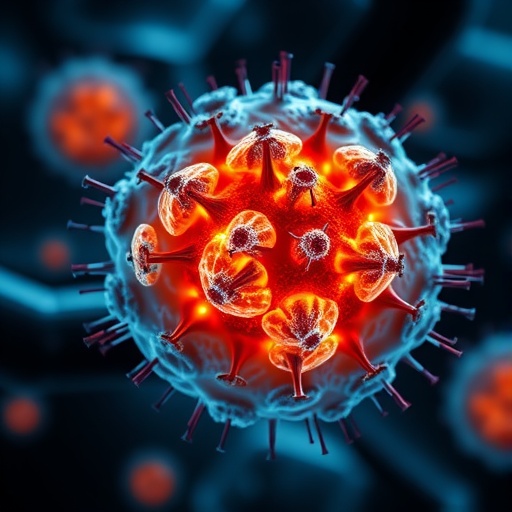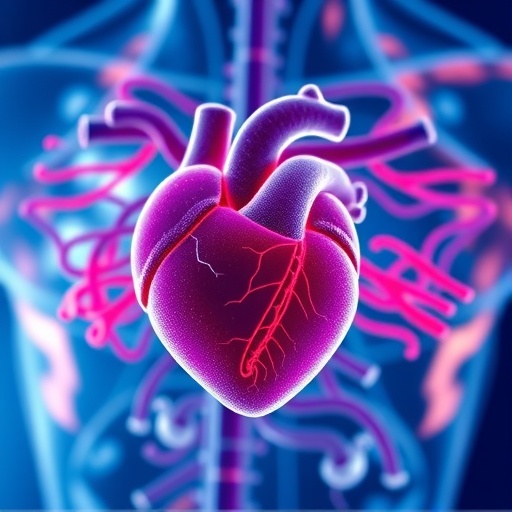
In a groundbreaking study led by researchers Mohammadkhanloo, Sharini, and Yousefpour, significant insights have emerged regarding the intricate relationship between neuropsychiatric disorders and procedural memory networks. This research harnesses the power of resting-state functional magnetic resonance imaging (rs-fMRI) coupled with advanced graph theory to illuminate the topological alterations that these conditions induce in the brain’s memory circuitry. As our understanding of these networks expands, the implications for treatment and diagnosis are poised to transform.
The human brain’s procedural memory network is responsible for the acquisition and execution of skills and habits—it enables us to perform tasks automatically once mastered. This study focuses on understanding how this essential network is impacted by various neuropsychiatric disorders, which typically disrupt cognitive functions and social interactions. Researchers aimed to investigate how the topology of these memory networks differs in individuals afflicted with disorders such as anxiety, depression, and schizophrenia.
Using resting-state fMRI allows researchers to study the brain without the influence of tasks, offering a snapshot of its functional connectivity in a resting state. This technique gains added power from the application of graph theory, which provides the mathematical framework needed to quantitatively analyze the brain’s topology. Graph theory allows for the characterization of networks based on their nodes (brain regions) and edges (connections between these regions), facilitating deeper insights into the functional architecture of the memory network.
In this study, the researchers utilized a robust cohort of participants diagnosed with various neuropsychiatric disorders and compared them to a control group of healthy individuals. By analyzing brain connectivity patterns, they successfully identified distinct topological alterations that characterize the procedural memory networks of those with neuropsychiatric conditions. These alterations not only highlight the disruptions in memory function but also point toward potential markers that could inform more accurate diagnoses.
One of the most startling findings revealed that individuals with anxiety disorders exhibited increased clustering in their memory networks. This suggests that while these individuals may struggle with task execution, their brain regions are communicating more intimately, potentially leading to an overload of processing during routine tasks. Contrastingly, individuals diagnosed with schizophrenia demonstrated a decrease in network efficiency, indicating a disjointed communication between memory-related brain regions, which may fundamentally impair their ability to learn and apply new skills.
The implications of these findings stretch far beyond the lab; they offer a new perspective on how routine activities, which many take for granted, can become challenging for those with neuropsychiatric disorders. As procedural memory underpins many everyday tasks—from riding a bike to typing on a keyboard—understanding its alteration in these conditions could inform therapeutic interventions aimed at bolstering cognitive function.
Additionally, the exploration of these topological changes posits the need for personalized treatment approaches. Treatments that target specific network alterations, as illuminated by rs-fMRI and graph theory, could pave the way for more effective rehabilitation strategies. The potential for utilizing rs-fMRI as a diagnostic tool is equally compelling, allowing for the identification of at-risk individuals based on the structural integrity of their procedural memory networks.
However, the researchers caution that while these findings are promising, further studies are necessary to fully understand the causative relationships between neuropsychiatric disorders and procedural memory network alterations. Longitudinal studies tracking patients over time could elucidate whether these changes are a cause or a consequence of the disorders in question.
In addition to neuropsychiatric implications, the study opens avenues for exploring procedural memory network alterations in other domains, such as cognitive aging and neurodegenerative diseases. By examining the intersections of these various conditions, researchers may uncover shared pathophysiological mechanisms that could inform broader therapeutic strategies.
This research also raises questions regarding the potential for technological interventions aimed at altering brain connectivity. Cognitive behavioral therapy, neurofeedback, and even transcranial magnetic stimulation (TMS) have shown promise in previous studies for enhancing cognitive functions. Exploring how these modalities could be adapted to target procedural memory networks may yield fruitful outcomes for improving patients’ daily lives.
The team of researchers plans to expand their studies further, incorporating larger samples and additional neuroimaging markers to gain a comprehensive understanding of the interplay between the brain’s functional networks and neuropsychiatric disorders. Their hope is that this iterative approach will lead to more nuanced and effective interventions tailored to the complex needs of individuals affected by such conditions.
As society becomes increasingly aware of mental health issues, studies like these provide not just hope but also a scientific framework for understanding the complexities of the human mind. Through the lens of rs-fMRI and graph theory, a clearer picture of the neural underpinnings of procedural memory is beginning to emerge, transforming the landscape of neuropsychiatric disorder research.
Indeed, as the understanding of brain networks evolves, so too does the approach to treatment and management of neuropsychiatric conditions. The future looks promising for crafting targeted therapeutic strategies that address the specific brain network alterations that individuals experience. If this trajectory continues, we may soon see significant changes in how these disorders are diagnosed, treated, and ultimately perceived within society.
Moreover, the researchers’ findings stimulate important discussions about the ethical implications of using advanced imaging techniques in clinical settings. As new methodologies promise to refine diagnostic accuracy, considerations around patient privacy and informed consent will need to be paramount. The application of this research may lead to revolutionary changes in mental health care, but it must be approached with caution to ensure that ethical standards are maintained.
In conclusion, the groundbreaking investigation into topological alterations in procedural memory networks across neuropsychiatric disorders is ushering in a new frontier in neuroscience. The combination of rs-fMRI and graph theory presents a methodological synergy that could redefine our understanding of mental health conditions and empower patients with tailored therapeutic approaches. As the neurons connect and the research evolves, we beckon a future where such studies herald innovative improvements in cognitive health.
Subject of Research: The relationship between neuropsychiatric disorders and procedural memory networks.
Article Title: Investigating topological alterations in procedural memory network across neuropsychiatric disorders using rs-fMRI and graph theory.
Article References:
Mohammadkhanloo, M., Sharini, H., Yousefpour, M. et al. Investigating topological alterations in procedural memory network across neuropsychiatric disorders using rs-fMRI and graph theory.
BMC Neurosci 26, 57 (2025). https://doi.org/10.1186/s12868-025-00979-z
Image Credits: AI Generated
DOI: 10.1186/s12868-025-00979-z
Keywords: neuropsychiatric disorders, procedural memory, resting-state fMRI, graph theory, cognitive health
Tags: anxiety and memory networksbrain functional connectivity analysiscognitive function disruptionsdepression and brain topologydiagnostic advancements in mental healthgraph theory in neurosciencememory network changesneuropsychiatric disordersprocedural memory circuitryresting-state fMRI applicationsschizophrenia brain connectivitytreatment implications for neuropsychiatric conditions




